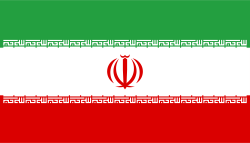New Reports Reveal Iran's Secret Tritium Extraction Facility Amid Rising Tensions
 Iran
IranIn a shocking incident on Saturday, two prominent Iranian judges were fatally shot inside the Supreme Court building in Tehran. The judges, Mohammad Moghiseh and Ali Razini, were known for imposing severe sentences, including death penalties, leading to their reputations as "judges of death" in the Iranian judicial system.
According to the judiciary's report, the attack appears to have been a "planned assassination" orchestrated by an armed infiltrator who did not have any legitimate business in the court. The assailant, armed with a handgun, shot the judges before reportedly taking his own life.
Judiciary spokesperson Asghar Jahangir stated that investigations are ongoing to determine the motive for the attack. While no group has claimed responsibility, officials have not dismissed the possibility of foreign involvement, highlighting the judiciary's previous efforts to target elements affiliated with external adversaries such as Israel and the United States.
The incident marks a significant attack on Iran's judiciary, home to judges who have faced international sanctions for human rights violations. Moghiseh, who issued over 1,600 years in prison sentences for political dissenters, and Razini, who survived a car bombing in 1999 and led trials following the 1988 mass executions, have both been associated with actions deemed crimes against humanity.
Following the shooting, the Supreme Court building was evacuated as investigations commenced, further escalating concerns regarding judicial security in Iran.
 Iran
Iran Iran
Iran Iran
Iran